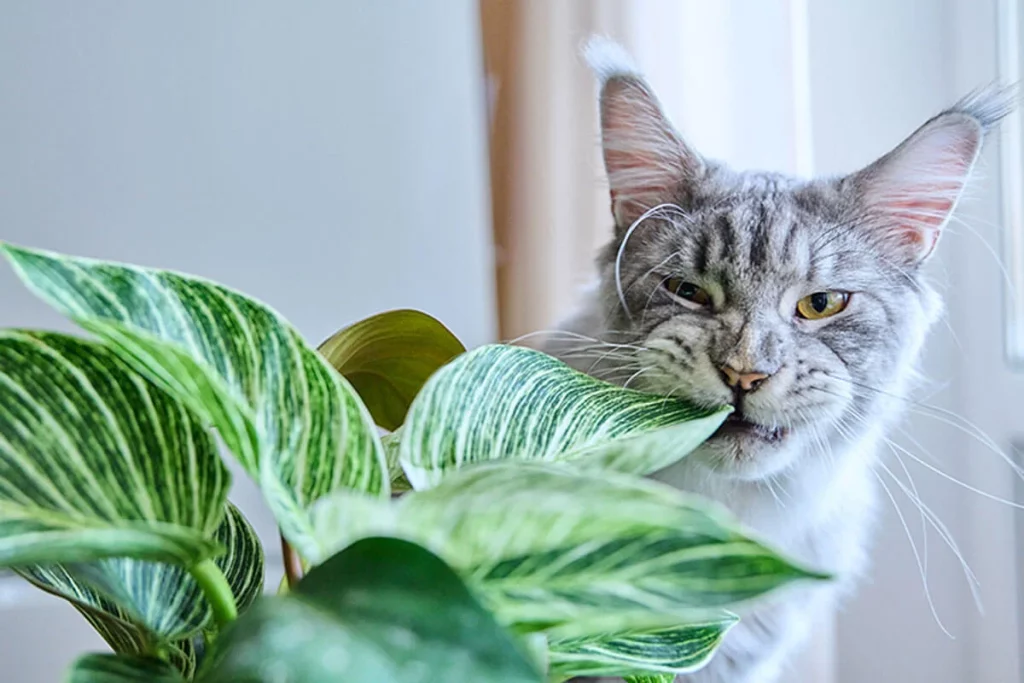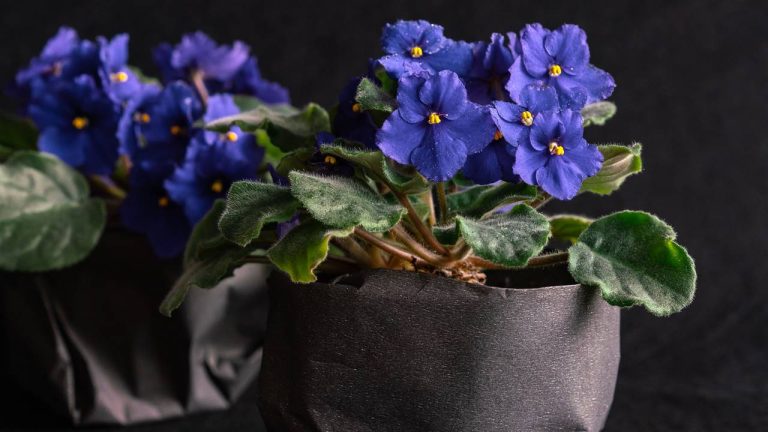
Introduction
Innocuous gestures like gifting a bouquet of flowers or a plant to someone who lives with dogs or cats can lead to a subsequent visit to the veterinarian if the toxic varieties for pets aren’t taken into account. This risk is exacerbated by botanical trends, where popular plants showcased on social media are purchased without consideration for their toxicity.
The greenery trend, also known as urban jungle decor, has filled homes with lush species like Monstera (Monstera deliciosa / Monstera Adansonii), Flamingo Flower (Anthurium spp.), Dumb Cane (Dieffenbachia spp.), Peace Lily (Spathiphyllum), Elephant Ears (Alocasia spp.), and Calla Lilies (Zantedeschia aethiopica). These interior design queens from the Araceae family, with their easy care and perfect aesthetics for adorning a living room corner, pose a danger to small animals due to their high calcium oxalate content. However, these are not the only ones. One of the few defenses the plant world has against pests, parasites, and fungi is the presence of chemical substances in their composition — secondary metabolites like alkaloids, terpenes, glycosides, and saponins — which can be found in the leaves, stems, seeds, fruits, or bulbs of live plants or cut flowers. If these plant species are accidentally ingested by pets, it may not lead to immediate death but could result in medium to long-term health problems due to the potential neurotoxic, hepatotoxic, nephrotoxic, and cardiotoxic agents present in some trendy ornamental varieties.
Identifying Toxic Plants
Even though there aren’t global figures on the incidence of plant intoxication in Europe, it’s been concluded that cats may be more sensitive to the toxicity of ornamental plants, while dogs might be more affected by outdoor plants. Families with pets can access databases and updated reports on botanical toxicity, such as the American Society for the Prevention of Cruelty to Animals (ASPCA) Poison Control Center’s registry of toxic plants for animals or the Toxic Plants 2022 report, compiled by the Ministry of Health in collaboration with the Spanish Foundation of Clinical Toxicology (FETOC), which focuses on human health but could be extended to companion animals.
In most cases, there are no antidotes, and the only option is to try to cleanse the animal’s body as soon as possible, limit the damage, and maintain hydration. In case of accidental poisoning, there are internet-circulated recommendations, without scientific basis, suggesting inducing vomiting in the animal or offering milk, salt, or activated charcoal. However, in certain cases, the remedy could be worse than the ailment. A study published in 2004, “Most Common Poisonings in Small Animals,” warns against using activated charcoal when the animal is already vomiting — which would prevent its absorption — or if there is suspicion of gastrointestinal perforation or pneumonia. It’s also ineffective beyond two hours after ingestion of the toxin, unless dealing with agents of prolonged elimination. “My recommendation is to avoid home remedies and call the vet as soon as possible. We take less time to get to emergency care with the pet than to wait for the home remedy to work, of which we may be unaware of the necessary quantity for its effectiveness,” suggests Pérez.
Veterinarians may assess whether inducing vomiting or performing gastric lavage is advisable, which is only effective within the first hour after ingestion of toxic leaves because after two hours, they will continue their path towards the intestine. In that case, treatment will continue with laxatives and adsorbents to eliminate the toxic agent from the body as soon as possible, while maintaining electrolyte balance with rehydration and fluid therapy. To prevent such distress and safeguard the well-being of dogs and cats, the best option would be to eliminate potential hazards and choose only plants safe for all family members.
50 Safe Plants for Dogs and Cats
According to the ASPCA registry of safe plants for dogs and cats, there are at least 573 varieties that could transform a home into a safe haven for pets. To ensure that you’re selecting the right plant, it’s ideal to visit the nursery armed with the scientific name of the desired variety. Here are 50 safe choices for indoor or outdoor environments:
- Arrowroot (Canna edulis)
- False Aralia (Dizygotheca elegantissima)
- African Violet (Saintpaulia spp.)
- Gerbera Daisy (Gerbera jamesonii)
- Mother of Pearl (Sedum weinbergii)
- Impatiens (Impatiens spp.)
- Peperomia (Peperomia obtusifolia)
- Watermelon Peperomia (Peperomia argyreia)
- Areca Palm (Dypsis lutescens)
- Money Tree (Pachira aquatica)
- Pilea (Pilea cadierei)
- Friendship Plant (Pilea involucrata)
- Spider Plant (Chlorophytum comosum)
- Bamboo (Phyllostachys aurea)
- Parlour Palm (Chamaedorea elegans)
- Holly Fern (Cyrtomium falcatum)
- Boston Fern (Nephrolepis exaltata bostoniensis)
- Sword Fern (Nephrolepis biserrata)
- Button Fern (Pellaea rotundifolia)
- Polka Dot Plant (Hypoestes phyllostachya)
- Rex Begonia Vine (Cissus discolor)
- Kentia Palm (Howea belmoreana)
- Ponytail Palm (Beaucarnea recurvata)
- Echeveria (Echeveria glauca)
- Prayer Plant (Calathea spp.)
- Rose (Rosa spp.)
- Neoregelia (Neoregelia spp.)
- Staghorn Fern (Platycerium bifurcatum)
- Camellia (Camellia japonica)
- Echeveria (Echeveria elegans)
- Wheat Celosia (Celosia spicata)
- Plumed Celosia (Celosia plumosa)
- Chinese Plumbago (Ceratostigma willmottianum)
- China Aster (Callistephus chinensis)
- Snapdragon (Antirrhinum majus)
- Star Jasmine (Trachelospermum jasminoides)
- Madagascar Jasmine (Stephanotis floribunda)
- Cornflower (Centaurea cyanus)
- Creeping Zinnia (Sanvitalia spp.)
- Crape Myrtle (Lagerstroemia indica)
- Star Magnolia (Magnolia stellata)
- Rose of Sharon (Hibiscus syriacus)
- Marigold (Calendula officinalis)
- Swamp Sunflower (Helianthus angustifolius)
- Swedish Ivy (Plectranthus australis)
- Lilyturf (Liriope muscari)
- Water Hyacinth (Eichhornia crassipes)
- Zinnia (Zinnia spp.)
- Zebra Plant (Haworthia fasciata)
- Carrion Flower (Stapelia variegata)
Conclusion
In conclusion, while plants can add beauty and ambiance to our homes, it’s essential to be mindful of their potential dangers to our beloved pets. By educating ourselves about toxic plants and choosing safe alternatives, we can create a pet-friendly environment where both humans and animals can thrive without the risk of poisoning. Remember, when in doubt, consult with your veterinarian to ensure the well-being of your furry companions.

